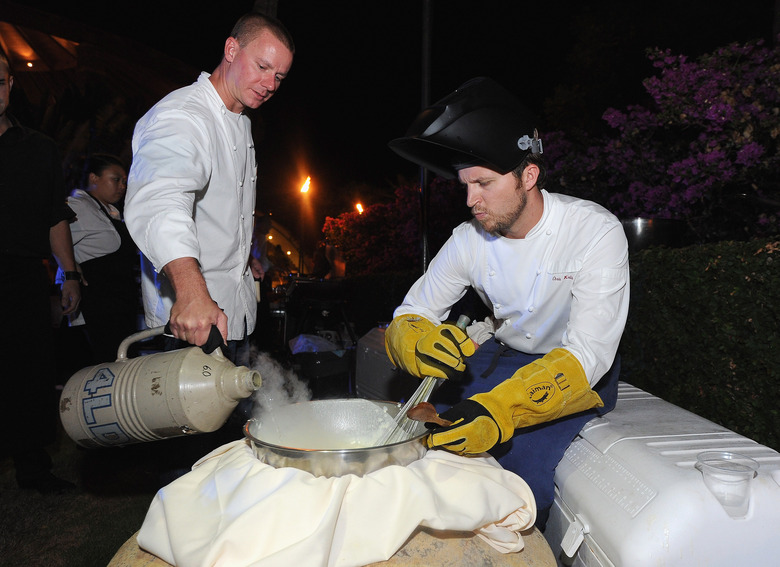Experiments With Liquid Nitrogen
Liquid nitrogen has great value for demonstrating scientific principles; although it is very cold and requires careful handling, LN2 is inexpensive, nontoxic and chemically inert. Because it is extremely cold — minus 196 Celsius (minus 320 Fahrenheit), it can help you demonstrate phenomena in a manner unattainable at normal room temperatures. Liquid nitrogen adds flair, fun and drama to science demonstrations.
Handling Precautions
Handling Precautions
Liquid nitrogen's main hazard is extreme cold; any body parts exposed directly to LN2 may rapidly suffer injury. This also applies to touching objects cooled in liquid nitrogen. When working with LN2, always wear safety goggles and cryogenic gloves — ordinary rubber gloves will freeze and crack. Dispense LN2 only from a cryogenic dewar or other approved container, and use Styrofoam bowls and boxes to hold demonstration objects. Remember that LN2 boils off into copious amounts of nitrogen gas; although non-toxic, it displaces oxygen, so perform your demonstrations in a well-ventilated environment.
Shrinking Balloon
Shrinking Balloon
The "shrinking balloon" experiment demonstrates the Ideal Gas law that relates temperature, volume and pressure. Blow up a party balloon and tie the end off. Pour about 200 to 300 mL of liquid nitrogen into a small Styrofoam picnic cooler. Carefully place the balloon in the LN2 so it comes into contact with the liquid. After a few seconds, the balloon shrivels up. Remove the balloon and let it warm up; it will re-inflate itself. The LN2 liquefies the air inside the balloon, greatly reducing its pressure and volume. When allowed to warm, the liquid evaporates, restoring the pressure inside.
Lead Bell
Lead Bell
At room temperatures, lead is a very soft metal. When struck with a mallet, a demonstration bell made of lead makes a dull "thunk." Add about a half-liter of LN2 to a Styrofoam container, place the bell in the liquid and give it a few minutes to chill down. Remove the bell and allow any liquid nitrogen to drip off. Strike the bell again and it rings brightly. The cold temperatures reduce the thermal vibrations in the lead atoms, making the metal harder.
Freezing Anti-Freeze
Freezing Anti-Freeze
When added to water in the correct proportions, automotive anti-freeze becomes a solid at temperatures as low as minus 55 degrees Celsius (minus 67 degrees Fahrenheit). Although this is good enough to keep most cars going through the winter, liquid nitrogen is so cold it will freeze anti-freeze solid. To demonstrate, make a 70/30 mixture of anti-freeze to water and pour about 150 mL into a Styrofoam bowl. Add a few hundred mL of LN2 and wait a minute or two; the anti-freeze becomes a syrupy liquid, then freezes into crystals. After several minutes, the LN2 evaporates, and the anti-freeze mixture warms, becoming liquid again.
Cite This Article
MLA
Papiewski, John. "Experiments With Liquid Nitrogen" sciencing.com, https://www.sciencing.com/experiments-liquid-nitrogen-12787/. 24 April 2017.
APA
Papiewski, John. (2017, April 24). Experiments With Liquid Nitrogen. sciencing.com. Retrieved from https://www.sciencing.com/experiments-liquid-nitrogen-12787/
Chicago
Papiewski, John. Experiments With Liquid Nitrogen last modified August 30, 2022. https://www.sciencing.com/experiments-liquid-nitrogen-12787/
